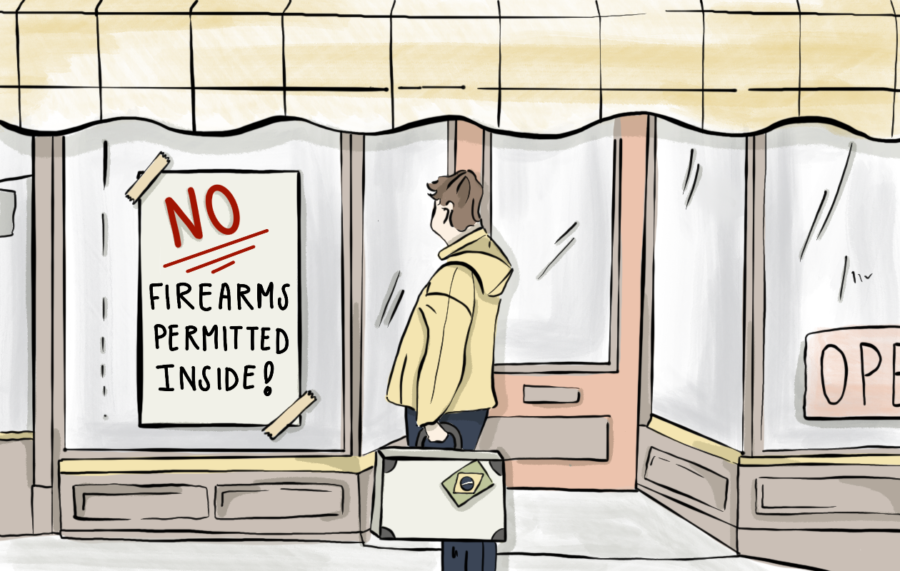Studying abroad means living without regrets, right? If we’re being utterly honest though, everyone has a couple when it comes to how much they wish they prepared for the semester. After living in Florence and traveling Europe for four months, here are a few tips I wish someone would have gotten real with me about before I up and traveled 4,549 miles across the globe.
What to Pack
OK, I know everyone is different when it comes to packing clothes. We all have our must-haves, and we all have a particular method for somehow managing to fit two seasons worth of clothes into one suitcase. The biggest tip I never knew I needed was that the weather will definitely not be 70 and sunny all the time. Yes, you’re in Italy. But yes, it does actually get quite cold in the winter. The bottom line is that arriving in Florence with only three sweaters packed was probably my worst mistake.
It would have been nice to know that a spring semester in Florence means 40 to 50 degrees all the way through March. The joyful thought of skipping an Ohio winter led me to believe I wouldn’t be cold here. Wrong.
Many nights dropped to around 30 degrees, so I wore my parka for the first two months. We even had a snow day, which doesn’t happen often. The entire city shut down for less than an inch of snow, something the majority at Kent State Florence was a little confused by. Other cities in Europe were even colder, like Paris and Germany, so having a smaller winter coat comes in handy on the weekends. The best investment, if you don’t already have one, is a packable down coat. The size and ease of packing make it perfect to carry along to each city.
Like others, I figured I would just buy clothes if I really needed them, so I wasn’t worried about packing too much. However, wrong again. I quickly came to realize I would be spending all of my life-savings on weekend travels—which leads me to my next tip.
How to Budget
People usually say to save the average amount of 4,500 to 5,000 dollars for spending to last the entire semester between living and travel. Either they’re not being completely honest about their spending habits, or they just didn’t travel on most weekends. Regardless, this budget is capable of being achieved if you put in the time to plan out your trips accordingly.
Unfortunately, for people like me, in wanting to travel nearly every single weekend, it gets more difficult to stay within your means. It definitely does not help when people like to exaggerate how cheap it is to travel around Europe before you get there. Like ‘Yeah, sure, you can buy an overnight train ticket to Paris for 20 euro!’ Nope, Paris train tickets cost around 500 euro, and the cheapest flight I found to make it to the city of love was 200 euro. Sure, you can manage to snag a Ryanair flight for 40 euro, but that’s on sale for a specific city on a particular day and time during the week—when you’ll have to go to class anyways.
The best thing to do is to choose the top five places you want to go, then log how much all travel and accommodations will cost, from the very beginning to the very end of your trip. And absolutely always budget a little extra just in case there’s an emergency or a change in getting back to home base. This will allow you to spread out your travels and make sure you save your spending cash for the places you want to see most. Also, yes, absolutely add in food costs because you know you’re going to want to try everything under the sun when you only have two days in each city.
Another big tip to keep in mind for trips you have your heart set on—look for Black Friday deals. If you know you’re going to Greece for spring break, look at student travel companies like Florence for Fun, Smart Trips and Bus2Alps. They offer 25 to 50 percent off on Black Friday, which will make a huge difference in the long run.
Where to Visit in Italy
One way to save money on traveling is to travel more within Italy, a tip I was given that I wish I listened to a little more. You should take advantage of the country you’re calling home for a while and the beautiful cities around Florence.
It can be very, very overwhelming having the coolest European cities you’ve always dreamed of visiting being closer to you now than ever. You may feel like you need to see all of them, but you will soon realize how burned out you can get by traveling so often.
Just remind yourself that you’re living in Italy, which gives you the best opportunity there is: exploring Italy. As soon as it gets warm in the spring, take advantage of visiting Amalfi Coast, Cinque Terre and any other beaches along the coast. And if it’s the fall, don’t wait.
Other places worth your while to see in Northern Italy are Rome, Milan, Siena, Venice and Lake Como in the Lombardy region. If you take the time to visit Southern Italy, make a stop at Mount Vesuvius, Capri, Positano and Bari. People rave about Sicily as well, but it’s a little bit of a hop, skip and a jump away.
Don’t make the same mistakes I did. Follow these tips for a better experience, and don’t forget, there is no wrong way to study abroad. No matter what your experience entails, you will have the time of your life and end up with your own tips to pass along.


















